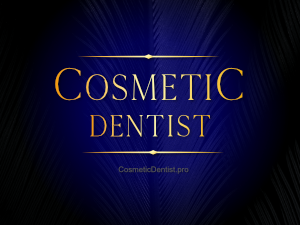Restorative Dentistry
Restorative dentistry involves removing problems (decay etc.) from teeth then rebuilding them to “restore” their function (ensure you can eat with them), optimise their aesthetics (appearance) and ensure comfort. Restorative techniques and materials allow the restoration of simple cases right through to those of an extremely complex nature, there are several ways to restore teeth which include;
- Fillings – to replace lost tooth tissue (due to decay or perhaps fracture).
- Inlay/ Onlay – much like a filling except that they are made outside the mouth then bonded into position. This can occur in a laboratory or potentially made via an in-surgery ceramic milling machine (e.g.Cerec).
- Veneers – a thin porcelain layer which is bonded to a tooth surface. Often used in cosmetic dentistry cases to change the shade (colour) or shape of a tooth/ teeth.
- Crowns – a covering designed to protect a tooth and usually optimise its appearance (shape, shade etc.).
- Bridgework – essentially several crowns joined together, usually to allow spaces to be filled where teeth are missing.
Fillings, Inlays and Onlays are available in Natural Tooth Shades – These can be bonded to the underlying tooth structure with tooth coloured bonding resin for aesthetics, longevity and ease of cleaning, thus maintaining a healthy gum margin.
Dental Crown
The decision to have a tooth crowned is often based on the amount (and nature) of the tooth tissue remaining after decay has been removed. It is important to replace any fillings (unless recently placed and trusted to be sound) prior to crowning teeth, thereby ensuring no underlying problems are incorporated underneath the structure (decay, fracture lines etc.) which may impact on longevity. A Dental Crown could be considered in cases of;
- Hairline fracture lines which may be seen as sensitivity to hot/ cold of pain on biting/ releasing.
- When there is too little tooth tissue left to reliably re-build (restore) a tooth using a filling or onlay / inlay.
- High/ atypical tooth wear, to help rebuild and protect the teeth.
- To restore an implant fixture (single unit implant).
- To change the shape or shade of teeth when veneers are not suitable (veneers fit only over the from of teeth and cannot cover around the back.
- To work in conjunction with a removable denture (prosthesis) allowing the use of retention features/ special attachments.
Dental Bridge
Dental Bridges are generally a number of crowns fused together and used to “bridge” a gap (and edentulous area). They vary considerably in their construction due to the variety of circumstances they can be used to treat. There are several types of bridge;
Standard Bridge – In most circumstances a crown is made to fit the tooth either side of a space (with a “tooth” in the space between). This is then cemented/ bonded into position to optimise aesthetics and longevity.
Cantilever Bridge – This may be constructed to restore an edentulous (missing tooth/ teeth) area that only has appropriately supportive teeth either in front of (mesially ) or behind (distally). The biting (occlusal) surface area of the ‘pontic’ (space filling part) is generally decreased by making it smaller than the original tooth.
Maryland Bridge – Similar to a standard bridge but using metal/ ceramic wings to allow bonding to the tooth either side of the space being filled. Whilst theoretically more conservative than a standard bridge there are several key issues which may be relevant;
- Bonding of the bridge wing too close to the gum line can lead to stagnation and greater difficulty in maintaining the hygiene in this region.
- There is a lower ‘surface area’ of bond so there is a higher chance of de-bond (failure of the bonding agent and detachment) i.e. increased risk of bridge failure which may also damage the supporting (abutment) teeth/ gum tissues.
- Failure of only 1 wing can allow decay to occur under the wing, which becomes incredibly difficult to clean.
Implant Supported Bridge – Similar to a standard bridge however the bridge is fixed to implant abutments (parts which fit into the implant fixtures within the jaw). The size of bridge therefore depends upon the number of teeth that can be supported by the implant fixtures which are in turn supported by the amount and quality of the bone available.


